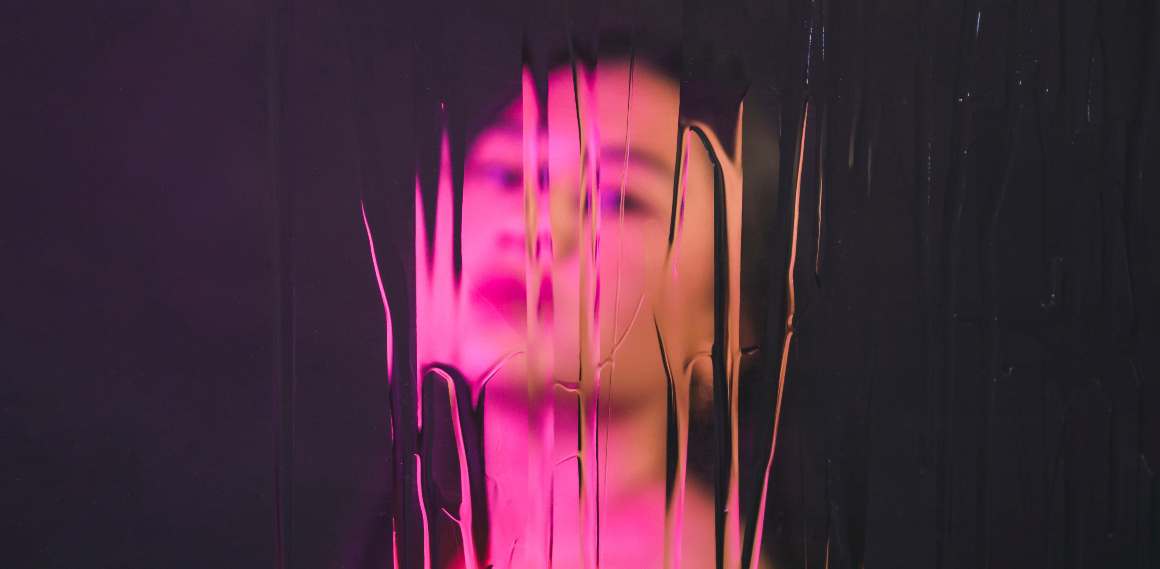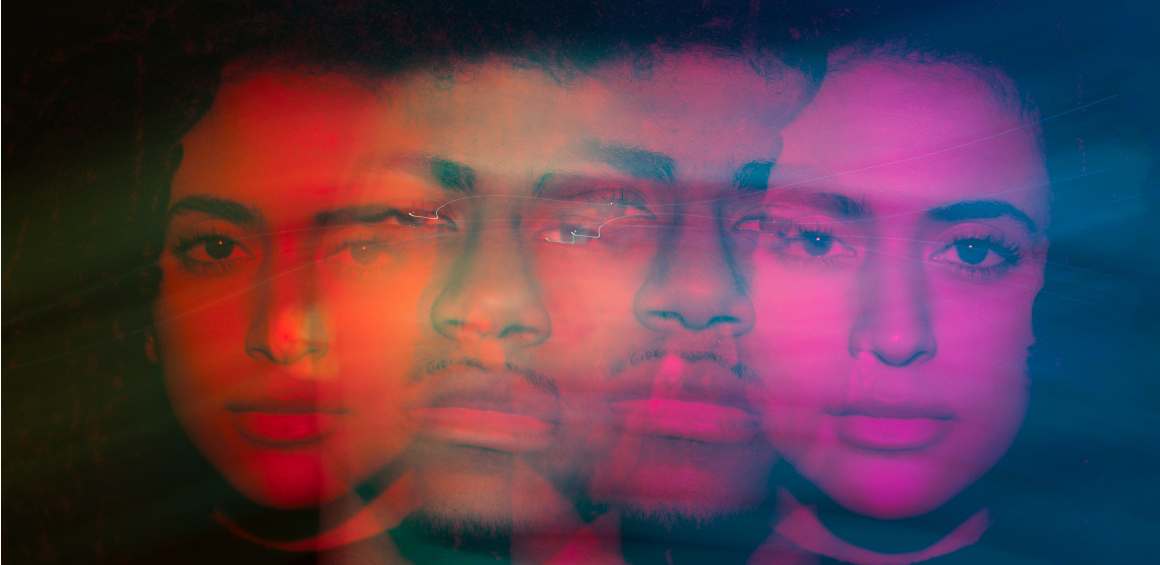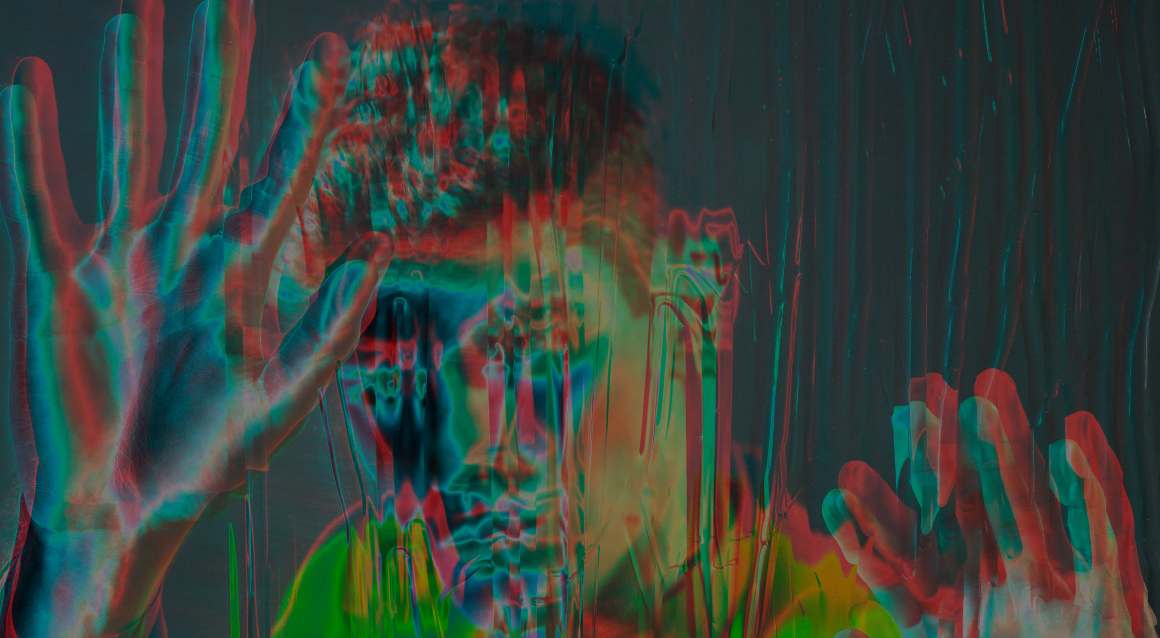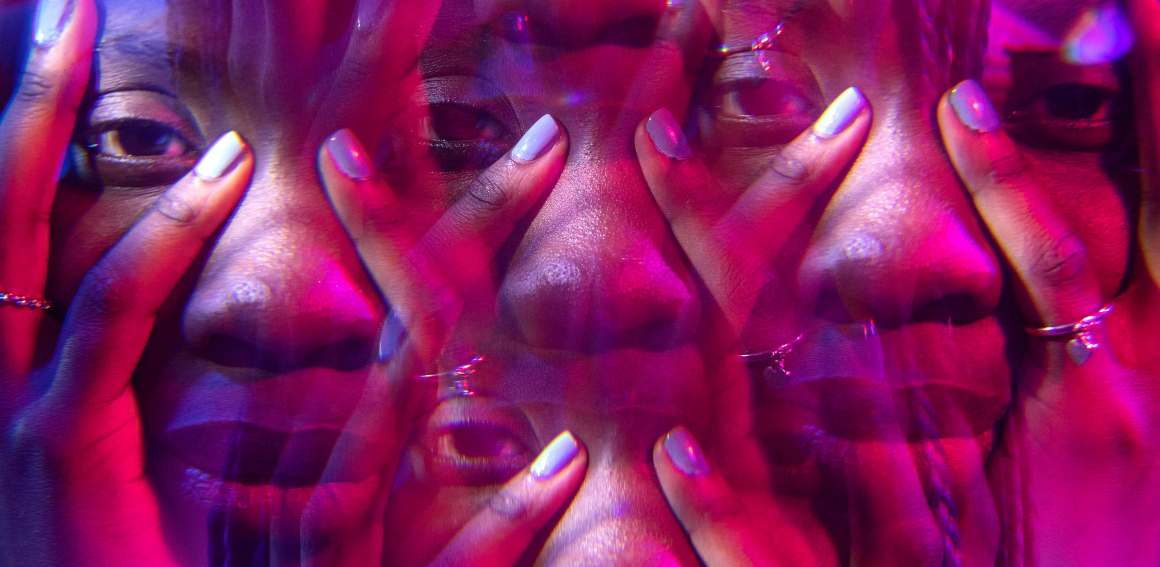Hypnagogic Hallucinations
Published:
Understanding Hypnagogic Hallucinations
Exploring the obscure realm of Hypnagogic hallucinations, let us take a plunge.
Contents:
- Understanding Hypnagogic Hallucinations
- Occurrence and Sleep Stages
- Potential Causes of Hypnagogic Hallucinations
- When Do Hypnagogic Hallucinations Occur?
- Potential Causes of Hypnagogic Hallucinations
- Factors Influencing Frequency & Severity of Hypnagogic Hallucinations
- Misinterpretations & Cultural Beliefs Surrounding Hypnagogic Hallucinations
- Managing and Reducing Hypnagogic Hallucinations: Tips for a Peaceful Slumber
- FAQs in Relation to Hypnagogic Hallucinations
- Conclusion
These vivid sensory experiences occur as you're drifting off to sleep and can involve sight, sound, smell, touch, and taste.
As many as seven out of ten individuals may have encountered these strange sensory occurrences while drifting off to sleep.
Differences between Hypnagogic Hallucinations and Dreams
Hypnagogic hallucinations differ from dreams in several ways.
While both are products of our imagination during sleep, these nighttime visions usually lack context compared to dreams and often include changing geometric patterns or images of animals and people.
Sensory Perceptions Involved in These Episodes
The fascinating thing about hypnagogic hallucinations is that they engage all five senses - not just vision like most dreams.
This means you might hear voices or sounds (common auditory hallucinations), feel physical sensations such as touch or movement (tactile), experience tastes (gustatory) or even smells (olfactory).

Occurrence and Sleep Stages
To better understand when these phenomena happen, let's explore their connection with different stages of sleep.
The Role of REM Sleep in Hypnagogia
REM sleep, with its rapid eye movements and dreaming, is essential for hypnagogic hallucinations to occur during the transition between wakefulness and REM sleep.
These episodes take place during the transitions between wakefulness and REM sleep, making them a unique part of our sleep experience.
Comparing Hypnagogic with Hypnopompic Hallucinations
While both types of hallucinations occur during sleep transitions, there's a key difference: hypnagogic ones happen as you're falling asleep while hypnopompic ones occur when waking up.
This distinction helps demystify these nighttime visions and their connection to our overall sleep cycle.
Potential Causes of Hypnagogic Hallucinations
The exact cause behind these vivid experiences remains uncertain, but researchers believe there could be some intriguing connections at play.
Neurological Factors Contributing to These Occurrences
Evidence suggests that certain neurological processes might contribute to the development of hypnagogia-induced episodes - perhaps sharing similarities with daytime hallucination experiences or dreams themselves.
Similarities with Daytime Hallucination Experiences
Hypnagogic hallucinations may share commonalities with other forms of sensory disturbances like those experienced in mental health disorders such as schizophrenia or bipolar disorder.
Further research is needed to better understand this fascinating link between daydreams, nightmares, and everything in-between.

When Do Hypnagogic Hallucinations Occur?
Let's talk about the timing of these fascinating experiences. Hypnagogic hallucinations tend to occur in the space between being awake and entering REM sleep, when your brain is hovering on the brink of slumber. But wait, there's more. As you transition from a deep slumber, your mind may be privy to hypnopompic hallucinations - an experience that occurs during the awakening process.
Hypnagogia vs. Hypnopompia: A Sleep Stage Showdown
The Role of REM Sleep in Hypnagogia
You might be wondering how REM sleep factors into all this, right? Well, it turns out that our brains are pretty active during REM sleep - think vivid dreams and rapid eye movement (hence the name). It's possible that hypnagogic hallucinations may share some similarities with dreaming since they both involve heightened brain activity while we snooze.
Comparing Hypnagogic with Hypnopompic Hallucinations
Moving on to their morning counterparts - hypnopompic hallucinations. As they slumber, one beckons while the other ushers them back to consciousness; a yin and yang of dreaming.
- Hypnagogic: Falling asleep? Check. Vivid sensory experiences? Check. Occasional confusion with dreams? You bet.
- Hypnopompic: Waking up to a world of bizarre sights and sounds that vanish as quickly as they appeared - yup, that's hypnopompia for you.
Now that we've established when these hallucinations occur, let's dive into the possible causes behind them in our next section. Stay tuned for some mind-bending revelations.
Potential Causes of Hypnagogic Hallucinations
Are you curious about what causes these fascinating yet sometimes unsettling nighttime visions? Well, buckle up because we're diving into the world of hypnagogic hallucinations and exploring potential explanations behind their occurrence.
Neurological Factors Contributing to These Occurrences
Researchers are still trying to pinpoint the exact cause of hypnagogic hallucinations but believe that neurological factors may play a significant role. According to studies, they could be related to the brain's transition from wakefulness to sleep, during which our minds can create vivid sensory experiences without external stimuli. This is similar to how dreams occur during REM sleep when our brains are highly active despite being disconnected from external sensations.
Similarities with Daytime Hallucination Experiences
Hypnagogic hallucinations share some similarities with daytime hallucination experiences often seen in mental health disorders like schizophrenia or bipolar disorder. In both cases, individuals might see images or hear voices that aren't really there due to an overactive imagination combined with reduced reality testing capabilities while falling asleep or experiencing episodes triggered by stressors and other factors throughout the day.
The Connection Between Sleep Disorders & Hypnagogia
Sleep disorders such as narcolepsy and insomnia have been linked to increased occurrences of hypnagogic hallucinations as well. Narcoleptics experience excessive daytime sleepiness and may have disturbed sleep patterns, which could lead to more frequent episodes of hypnagogia. On the other hand, insomniacs might be more prone to these hallucinations due to heightened anxiety levels and prolonged periods spent trying to fall asleep.

Medical Conditions & Hypnagogic Hallucinations
Lastly, certain medical conditions like Parkinson's disease can also contribute to an increased likelihood of experiencing hypnagogic hallucinations. Parkinson's patients often experience visual disturbances as a result of changes in their brain chemistry and function, making them more susceptible to these vivid nighttime visions.
In conclusion, hypnagogic hallucinations can be attributed to a range of causes, such as physiological changes during sleep cycles, comparable daytime visions, sleeping disorders like narcolepsy or insomnia, and medical issues including Parkinson's. If you experience hypnagogic hallucinations, know that you're not alone, and it's a common symptom of many sleep problems. Seek medical attention if you're concerned about your sleep health.
Factors Influencing Frequency & Severity of Hypnagogic Hallucinations
Let's dive into the factors that can impact how often and how intense hypnagogic hallucinations occur. We'll explore some common culprits, as well as ways to minimize their effects on your sleep experience.
Impact of Drug Use & Alcohol Consumption on Frequency
It's no secret that alcohol and drug use can disrupt your sleep patterns. Substances like alcohol can interfere with REM sleep, increasing the frequency of hypnagogic hallucinations. This is because substances like alcohol disrupt normal REM sleep cycles, making it harder for you to fall asleep peacefully and without disturbances.
Anxiety-Insomnia Combinations Affecting Severity
Anxiety and insomnia often go hand-in-hand when it comes to disturbed sleep experiences. Research indicates that those enduring insomnia caused by anxiety may be more likely to have intense hypnagogic visions because of their heightened stress levels during sleep time.
The good news is that there are ways to tackle this troublesome duo. Maintaining a consistent sleep schedule, creating a relaxing bedtime routine, and limiting screen time before bed can all help ease your mind and prepare you for sleep.
- Maintain a consistent sleep schedule: Going to bed at the same time every night helps regulate your body clock and reduces nighttime anxiety.
- Create a relaxing bedtime routine: Engaging in calming activities like reading, taking a warm bath, or practicing meditation can help ease your mind and prepare you for sleep.
- Limit screen time before bed: The blue light emitted from electronic devices can interfere with melatonin production - the hormone responsible for regulating sleep. Try to avoid screens at least an hour before bedtime.
If these strategies don't seem to be helping, it's important to consult a healthcare professional who may recommend additional treatments or therapies tailored specifically to your needs. In some cases, addressing underlying medical conditions such as narcolepsy or Parkinson's disease, which are known contributors to hypnagogic hallucinations, might be necessary for long-term relief and improved sleep quality.

Misinterpretations & Cultural Beliefs Surrounding Hypnagogic Hallucinations
Let's face it, hypnagogic hallucinations can be pretty spooky. However, before you call the Ghostbusters, let's explore some common misinterpretations and cultural beliefs surrounding these nighttime visions.
Common Misinterpretations of Hypnagogic Hallucinations
Have you ever woken up convinced that there was a ghost in your room? You're not alone. Hypnagogic hallucinations are often mistaken for supernatural encounters due to their vivid and realistic nature. In fact, up to 70% of people have experienced hypnagogic hallucinations at least once in their lifetime.
Cultural Beliefs Surrounding Nighttime Visions
Different cultures interpret hypnagogic hallucinations differently based on their own unique beliefs and folklore. In some societies, these experiences might be attributed to spirits visiting during sleep or even divine intervention from higher powers. However, understanding the science behind these occurrences can help dispel misconceptions and reduce fear associated with them.
Tips for Demystifying Your Nighttime Encounters:
- Educate yourself about hypnagogic hallucinations and their causes.
- Recognize that these experiences are a natural part of the sleep process for many people, not evidence of supernatural phenomena.
- Talk to others who have experienced similar episodes - you're not alone.
- If your hypnagogic hallucinations become troubling, seek the help of a medical expert for advice and aid.
Remember: knowledge is power. Gaining knowledge of our sleep patterns and the science behind hypnagogic hallucinations can help us avoid misinterpreting them as something alarming.
So next time you find yourself startled by an unexpected nighttime visitor, take a deep breath and remind yourself that it's just your brain doing its thing during those twilight moments between wakefulness and REM sleep.
Managing and Reducing Hypnagogic Hallucinations: Tips for a Peaceful Slumber
Alright, let's dive in.
Hypnagogic hallucinations can be distressing, but don't worry - we've got your back with some helpful tips to manage and reduce these nighttime visions.
Let's break it down step by step:
Adjusting Medications for Better Sleep Quality
Step #1: Consult your healthcare provider about any medications you're taking that might be affecting your sleep quality or contributing to hypnagogic hallucinations.
Step #2: If necessary, work with them to adjust dosages or switch medications altogether - remember, always follow their advice.
Practicing Good Sleep Hygiene and Relaxation Techniques
Step #3: Create a consistent bedtime routine that includes winding down activities like reading or listening to calming music before bed. This helps signal the brain that it's time for sleep.
- Maintain a regular sleep schedule, even on weekends.
- Keep your bedroom cool, dark, and quiet to create a sleep-friendly environment.
- Avoid caffeine and alcohol close to bedtime as they can disrupt sleep patterns.
Step #4: Consider incorporating relaxation techniques like deep breathing exercises or progressive muscle relaxation into your routine. These practices can help calm the mind and body before bed, reducing the likelihood of hypnagogic hallucinations occurring.
Bonus Tip: If you're still struggling with hypnagogic hallucinations despite making these changes, consider seeking professional help from a therapist or counselor who specializes in sleep disorders. They may be able to provide additional guidance tailored specifically for you.
To wrap it up: managing and reducing hypnagogic hallucinations is possible by adjusting medications under medical supervision, practicing good sleep hygiene habits, and utilizing relaxation techniques before bed. With some effort put into improving your overall well-being and understanding what works best for you personally, peaceful slumber awaits.
FAQs in Relation to Hypnagogic Hallucinations
What are hypnagogic hallucinations associated with?
Hypnagogic hallucinations are often associated with sleep disorders such as narcolepsy, insomnia, and sleep apnea. They can also be linked to stress, anxiety, fatigue, or certain medications. However, these vivid sensory experiences can occur in healthy individuals as well during the transition from wakefulness to sleep.
What are 3 hypnagogic hallucinations examples?
- Visual: Seeing shapes or figures that aren't there
- Auditory: Hearing voices or sounds without an external source
- Bodily sensations: Feeling a sensation of floating or falling
Is it normal to have hypnagogic hallucinations?
Yes, experiencing occasional hypnagogic hallucinations is considered normal for most people. These sensory experiences typically occur during the transitional period between wakefulness and sleep and do not necessarily indicate any underlying health issues unless they become frequent or disruptive.
What are the most common hypnagogic hallucinations?
The most common types of hypnagogic hallucinations include visual (shapes, patterns), auditory (voices, music), tactile (touch sensations), and kinetic (sensations of movement). These experiences may vary among individuals but generally involve vivid perceptions that seem real despite lacking an actual stimulus.
Conclusion
Overall, hypnagogic hallucinations are a common experience that many healthy individuals may encounter during their lifetime. It is essential to differentiate between dreams and hypnagogia, as well as how to lessen their occurrence if they become disruptive. Additionally, it is crucial to seek professional help if these experiences are impacting mental health or interfering with daily activities.








